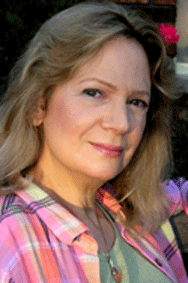Once upon a time, it seemed there were just three formats for literary fiction: short stories, novels and novellas. Although few readers could define exactly what constitutes any of these categories, they usually have strong preferences for one over the others.
Until a few years back, I favored novels. To me, short stories were sketches or snacks whereas novels were full-fledged paintings or sumptuous banquets. Who doesn’t love to become absorbed into a good novel?
In 2006, I started writing short stories as a way to hone skills I felt I needed in order to write a novel. Along the way, reading great short stories and writing my own, I came to appreciate the craft of short story writing. A great short story is as memorable and satisfying as a great novel. My list of favorite short story authors includes O. Henry, Edgar Allen Poe and Alice Munro.
Some novels are constructed of vignettes that could stand alone as short stories. Some novels expand this concept over a collection of books: each book stands alone but all are connected by plots that interweave the same characters or settings at different times or from different viewpoints. Ursula Hegi comes to mind, with several books set in the fictional German town of Burgdof before, during and after World War II, showing recurring characters from different viewpoints.
So many great books are novellas. Among the best are Ernest Hemingway’s The Old Man and the Sea; John Steinbeck’s Of Mice and Men; George Orwell’s Animal Farm; and Truman Capote’s Breakfast at Tiffany’s.
What differentiates a novel from a novella from a short story? Length, obviously, is one factor. Typically, a novel runs 40,000 words; a novella uses 17,501-40,000 words; and a short story runs 7,500 words or less. Between 7,501 and 17,500 words can be considered a short story, a novella or a “novelette”.
Beyond length is structure. Short stories have fewer characters and, usually, a briefer time span. Novels have the luxury of developing characters and plot. Regardless of the length, both forms have the ability to grab and hold you. The difference is akin to looking at photos taken through different lenses. A close-up photo may show you less than a panoramic picture but it can be examined in finer detail without losing your interest because of its dedicated smaller focus. The panoramic photo tells a more sweeping story that combines many points of interest but, perhaps, not so closely. Both can be dramatic or funny. Both can touch you deeply and stay with you like a whisper that lingers in your ear.
Form should follow function. An author should choose his or her story platform based on what the story needs in order to be most effectively told. Readers should be open to reading all formats because, as noted by my examples, great stories come in all sizes. That’s why Book●ed welcomes all formats for review and promotion.
I haven’t even touched on the increasingly popular format of Flash Fiction, also known as Micro Fiction, the shortest form of fiction. Stay tuned.

